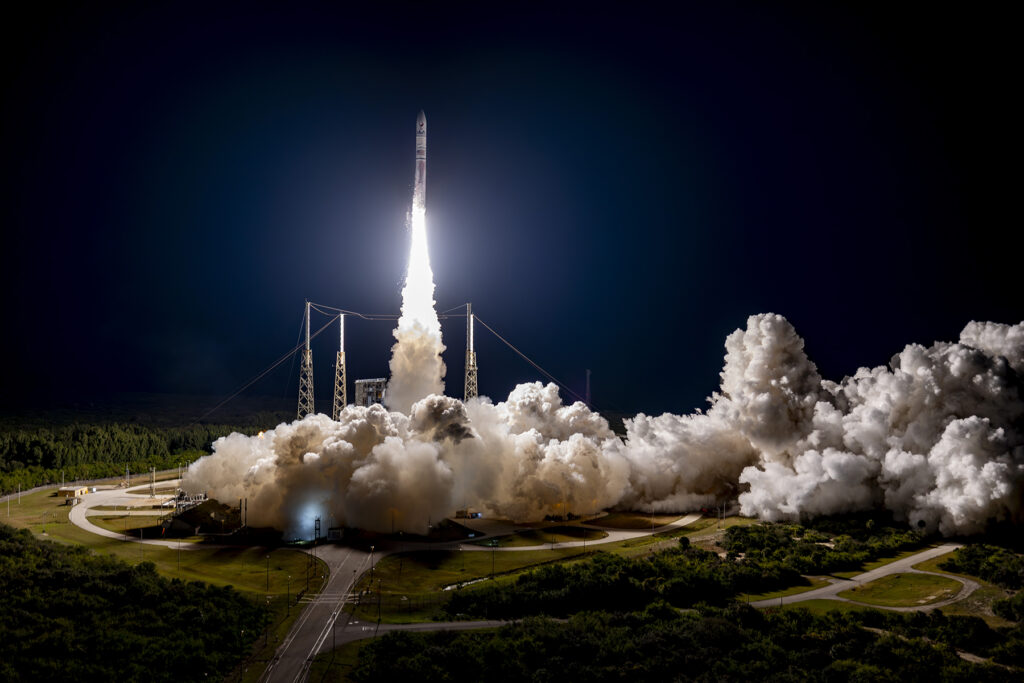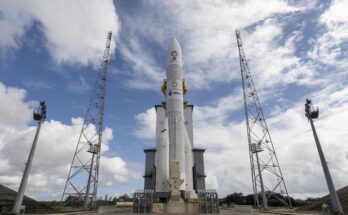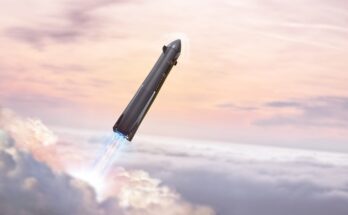
The Vulcan rocket, a new launch vehicle in the United Launch Alliance’s (ULA) fleet, had its first launch on January 8. The launch vehicle performed nominally; however, Astrobotic Technology’s Peregrine 1 Lunar Lander suffered a propulsion system failure later in the mission. Despite the payload anomaly, the Vulcan launch has ushered in a new generation of ULA launch vehicles.
The Vulcan, formerly known as the Next Generation Launch System (NGLS), is a family of launch vehicles being developed by United Launch Alliance (ULA) to replace the Atlas V and Delta IV. ULA plans to introduce about a dozen variants of the Vulcan rocket. Launch vehicles will be equipped with either 4- or 5-meter payload fairings. The Vulcan family will be further broken down by the number of side-mounted solid rocket boosters attached. Rockets equipped with 4-meter payload fairings can be equipped with up to four side-mounted boosters, while 5-meter payload fairing rockets will have up to six boosters.
The successful Vulcan launch is a feather in the cap of ULA. The Vulcan is ULA’s response to the major changes taking place in the space launch market.
The new launch vehicle addresses two problems that have arisen at ULA in recent years. The first is new, low-cost competition from Space Exploration Technologies (SpaceX). SpaceX’s Falcon 9 has already been certified to carry national security payloads, and it costs much less than ULA’s Atlas V and Delta IV.
The other major issue the Vulcan addresses is as a replacement for the RD-180 engine – the main engine on the Atlas V. Use of this engine, supplied by Russian company Energomash, has come under fire due to the war in Ukraine. Congress demanded that the Air Force and ULA find a replacement for the venerable engine. Blue Origin’s BE-4 has since been chosen as the main engine for Vulcan.
Not only was this the first Vulcan launch, but also the debut of the BE-4 engine, which is also destined for use on Blue Origin’s “New Glenn” rocket. Little information is available on the Blue Origin launch vehicle’s progress; however, the launch might take place later next year.
Setbacks are normal in Spaceflight and despite Peregrine 1’s malfunction, much information will be gleaned from this mission to prevent future issues. A larger Astrobotic Griffin lander is currently being developed.
Carter Palmer has long held a keen interest in military matters and aviation. As a FI's space systems analyst he is responsible for updating the reports and analyses within the Space Systems Forecast – Launch Vehicles & Manned Platforms and Space Systems Forecast – Satellites & Spacecraft products.




